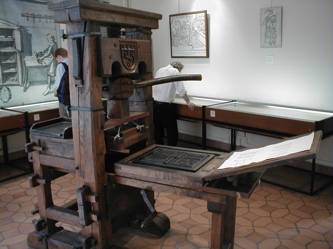
Printing has been an integral part of society since the first movable type printing press was invented by Johannes Gutenberg in the 15th century. And yet, many recent headlines have heralded its impending death. As everything from books to newspapers transitioned to digital media, the traditional printing techniques seemed destined for the history books and museums. However, even before the popularity of printing started to fade, some of the concepts were being reimagined in amazing, new—and three dimensional— ways.
Although it has only captured our attention recently, 3D printing was first imagined in the early 1980s (1). Unlike traditional printing that uses thin layers of ink to create the “print” of a visual shape on paper, 3D printing, also called additive manufacturing, uses an additive process where many layers of a material are laid down to form stand-alone, three dimensional objects. With this process, the possibilities seem endless. Indeed, what you can “print” is only limited by your computer-aided design and the composition of the “inks” you print with.
Recently, researchers at the Wyss Institute for Biologically Inspired Engineering at Harvard University in collaboration with the Harvard School of Engineering and Applied Sciences used 3D printing and specially developed bio-inks to create 3D tissue constructs complete with tiny blood vessels and multiple types of cells (2).
Although scientists have printed human tissues before, they could only do so in very thin layers. Attempts to produce thicker sections of tissue always resulted in the death of the interior areas from oxygen and nutrient deprivation. The way around this was to create tiny vessels that act as conduits for nutrients and oxygen, mimicking the function of the tiny blood vessels that permeate natural tissue.
The 3D printing method developed by the researchers at the Wyss Institute uses several printing heads and specialized bio-inks to produce complex living tissues complete with the necessary labyrinth of blood vessels. The Bio-inks they developed are specialized inks that contain key ingredients for living tissues. For example, one ink contained an extracellular matrix, while another contained both the matrix and living cells.
The work of these researchers is a significant step toward printing realistic tissues that can be used in the laboratory for things like drug safety and effectiveness testing. Perhaps more importantly, this work is fundamental to the goal of someday printing living functional tissues.
When the printing press was invented, neither of the popular handwriting inks of the time could adhere to printing surfaces without blurring. The invention of printing ink made of soot, turpentine and walnut oil enabled the people of the 15th century to print books (3). It revolutionized the world. With the invention of these specialized bio-inks, 3D printers could do that again.
References
- 3D printing. Wikipedia. Accessed March 3, 2014.
- An Essential Step toward Printing Living Tissues. Wyss Institute for Biologically Inspired Engineering at Harvard University Press Release, February 19, 2014.
- Ink. Wikipedia. Accessed March 3, 2014.
